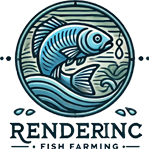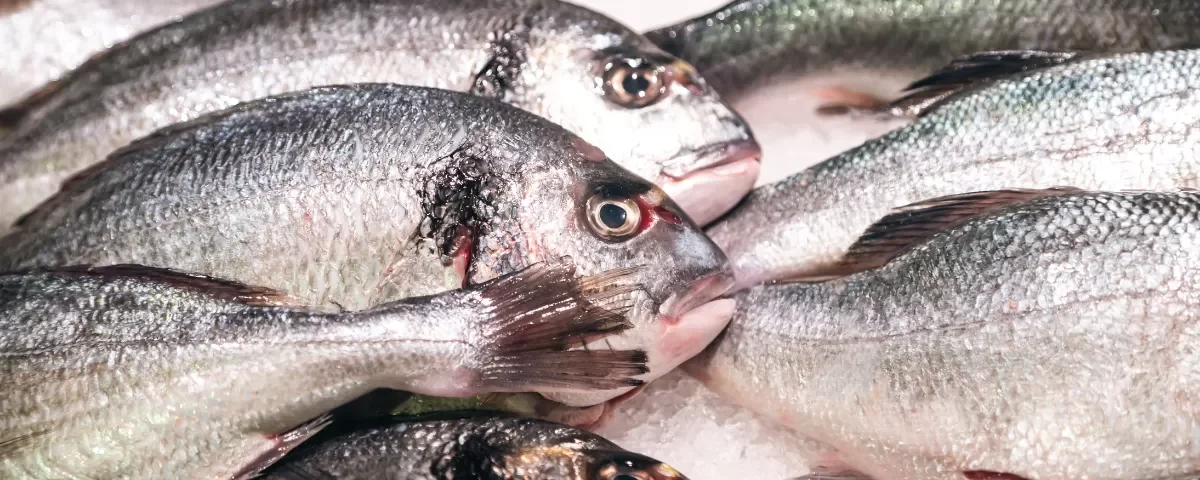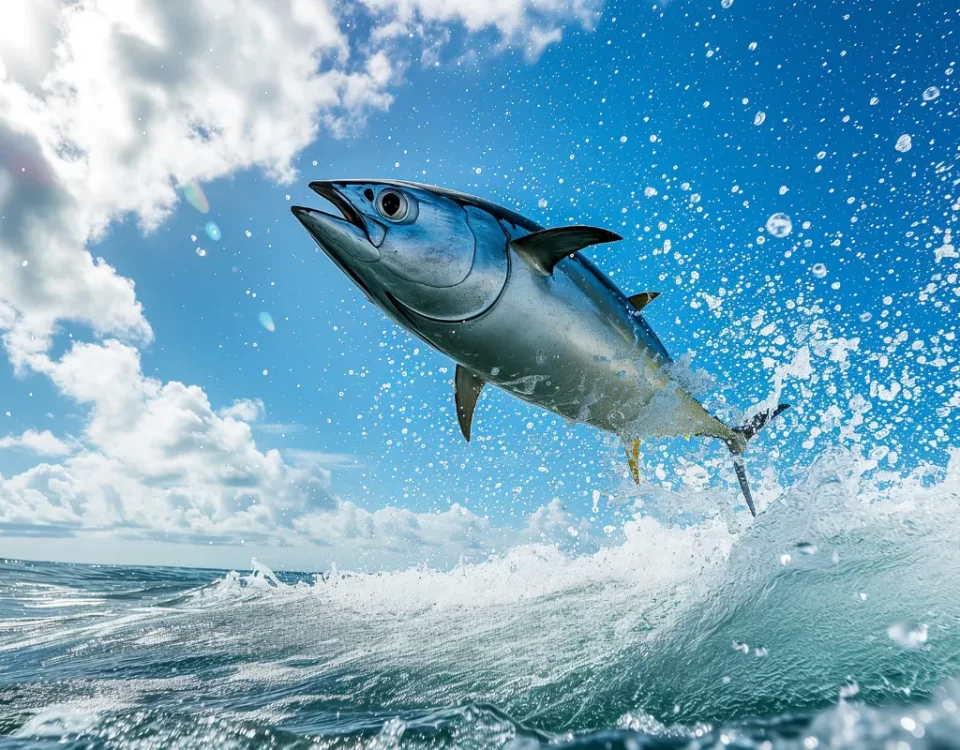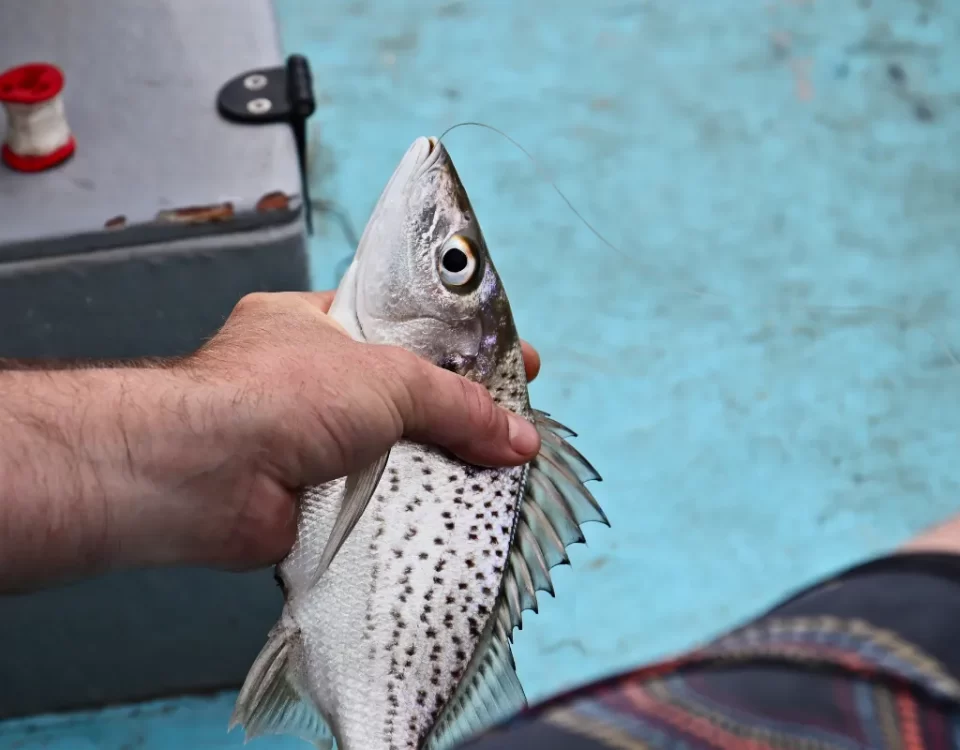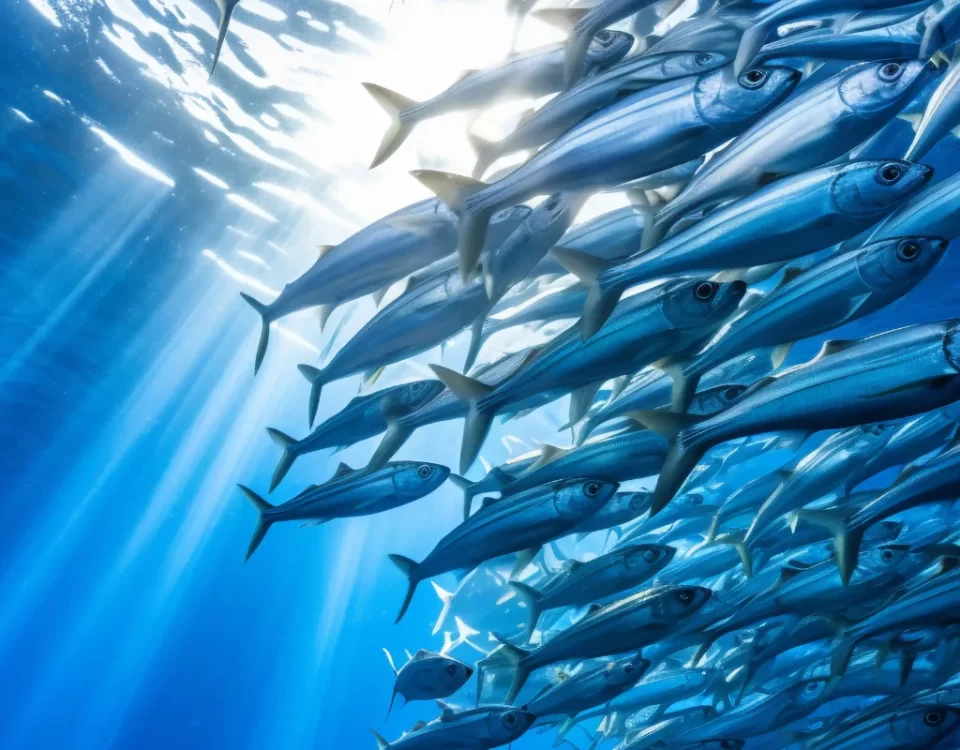Best Practices for Hatchery Management in Aquaculture

How to Use Waste from Fish Farms for Agriculture
September 13, 2024
How to Prevent and Treat Fish Diseases in Aquaculture
September 13, 2024Setting Up the Hatchery
Setting up a hatchery is a crucial first step in successful aquaculture operations. Selecting the right location for the hatchery is paramount to its efficiency and performance. It is essential to choose a site with easy access to clean water sources and away from potential sources of pollution. Proximity to transportation routes for easy distribution of fish larvae is also a key consideration. Additionally, factors such as climate, temperature, and availability of utilities should be taken into account when choosing a location for the hatchery.
Designing a functional layout for the hatchery is essential for ensuring efficient operations. The layout should be carefully planned to optimize workflow and minimize the risk of contamination. Separating different stages of production, such as egg incubation, larval rearing, and juvenile fish tanks, can help prevent the spread of diseases and improve overall hatchery management. Adequate space for equipment, storage, and personnel movement should also be incorporated into the layout to facilitate daily operations.
Ensuring a proper water source and maintaining water quality are critical for the optimal growth and development of fish larvae. The water source should be free from pollutants, parasites, and harmful microorganisms that could negatively impact the health of the fish. Implementing water filtration systems and regularly monitoring water quality parameters such as temperature, pH, and dissolved oxygen levels are essential practices in hatchery management. Additionally, ensuring a consistent supply of clean water with the right temperature and salinity levels is vital for the healthy growth of fish larvae.
Incorporating biosecurity measures into the hatchery design is essential for preventing the introduction and spread of diseases. Implementing strict protocols for disinfection, sanitation, and pest control can help minimize the risk of disease outbreaks and safeguard the health of the fish larvae. Employee training on biosecurity procedures and regular monitoring of biosecurity practices are essential components of hatchery management to ensure the health and success of the aquaculture operation.
Selecting Broodstock
Selecting healthy broodstock is a critical factor in successful hatchery management in aquaculture. The quality of broodstock significantly influences the overall health and performance of the offspring, thus directly impacting the success of the hatchery operation. When choosing broodstock, it is essential to prioritize individuals that exhibit robust health, impressive growth rates, and good reproductive characteristics. By starting with healthy broodstock, hatcheries can lay a strong foundation for producing high-quality fish for market or stocking purposes.
Importance of choosing healthy broodstock
The importance of choosing healthy broodstock cannot be overstated. Healthy broodstock contribute to the genetic diversity and vitality of the offspring, leading to stronger and more resilient fish that are better equipped to thrive in various environmental conditions. Diseases and deformities can be passed on from parent fish to their progeny, emphasizing the need to select broodstock free from any known health issues. Regular health screenings, including blood tests and genetic analyses, can help ensure that only the healthiest individuals are chosen for breeding purposes.
Genetic considerations for breeding
In addition to physical health, genetic considerations play a significant role in broodstock selection. Genetic diversity is crucial for maintaining a healthy population of fish that can adapt to changing environments and resist diseases. Hatcheries should aim to create breeding programs that not only prioritize desirable traits such as fast growth and disease resistance but also prevent inbreeding and promote genetic variability. By carefully managing the genetic makeup of the broodstock, hatcheries can enhance the overall quality and sustainability of their fish production.
Monitoring and maintaining broodstock health
Continuous monitoring and maintenance of broodstock health are essential aspects of hatchery management. Regular health checks, proper nutrition, and suitable living conditions are all integral to ensuring the well-being of the broodstock. Monitoring for signs of disease, parasites, or stress can help hatchery operators take proactive measures to address any issues promptly. By providing broodstock with a healthy environment and attentive care, hatcheries can maximize their reproductive potential and produce offspring of superior quality.
Egg Collection and Incubation
In the realm of aquaculture, efficient egg collection and incubation are vital steps that require precision and expertise. Proper management of these initial stages sets the foundation for successful hatchery operations. Let’s delve into the key aspects of egg collection and incubation best practices to ensure optimal results in fish farming.
Techniques for Collecting and Handling Fish Eggs
When it comes to collecting fish eggs, gentle and cautious methods are paramount to prevent damage and maintain egg viability. Techniques such as stripping, where eggs are manually expressed from the female fish, and spawning mats, which provide a substrate for fish to naturally deposit eggs, are commonly employed. It’s crucial to handle the eggs with utmost care to avoid breakage or contamination, as even minor mishandling can compromise the hatching process.
Proper Incubation Conditions and Equipment
Creating ideal incubation conditions is essential for the development of fish eggs. Temperature, oxygen levels, and water quality play integral roles in ensuring successful incubation. Utilizing specialized equipment such as incubation trays or jars with controlled environmental settings can help maintain optimal conditions. Monitoring and regulating factors like water flow and light exposure are crucial to support healthy egg development.
Monitoring Egg Development and Hatching Rates
Continuous monitoring of egg development is necessary to track progress and identify any deviations from the norm. Regularly inspecting the eggs for signs of fertilization, abnormal growth, or disease is key to address issues promptly. Additionally, tracking hatching rates provides insight into the efficiency of incubation protocols and helps adjust management practices as needed. Maintaining meticulous records of incubation factors, such as temperature fluctuations and egg mortality rates, aids in refining hatchery techniques for improved outcomes.
By implementing meticulous egg collection and incubation strategies, aquaculture practitioners can enhance the success and sustainability of their hatchery operations. Adhering to best practices in handling fish eggs, optimizing incubation conditions, and closely monitoring development stages are essential steps in fostering healthy fish populations and fostering a thriving aquaculture industry.
Larval Rearing
Larval rearing is a critical stage in hatchery management in aquaculture, as it sets the foundation for the growth and development of young fish. Feeding protocols for larval fish play a crucial role in ensuring their survival and healthy growth. During the early stages of development, larval fish are often too small to consume traditional feed pellets. To meet their nutritional requirements, a specialized diet of live feeds such as rotifers, artemia, and copepods is commonly used. These live feeds are rich in essential nutrients and ensure that the larvae receive the necessary energy for growth and development.
In addition to feeding protocols, water quality management is paramount for optimal growth and health of larval fish. Maintaining pristine water quality conditions is essential to reduce stress on the vulnerable larvae and prevent common issues such as ammonia spikes and oxygen depletion. Regular monitoring of water parameters such as temperature, pH, ammonia levels, and dissolved oxygen content is crucial. Implementing effective filtration systems and carrying out water changes regularly can help ensure a clean and healthy environment for the larvae to thrive.
Furthermore, disease prevention and treatment are vital aspects of larval rearing in aquaculture. Young fish are particularly susceptible to diseases and infections due to their underdeveloped immune systems. To prevent disease outbreaks, strict biosecurity measures should be in place, such as disinfection protocols, quarantine procedures, and limiting human traffic in the hatchery. In the event of a disease outbreak, early detection and intervention are key. Working closely with aquaculture veterinarians to identify and treat diseases promptly can help minimize losses and ensure the health of the larval fish.
In conclusion, larval rearing is a critical stage in hatchery management that requires careful attention to feeding protocols, water quality management, and disease prevention. By implementing best practices in these areas, aquaculture producers can maximize the growth and survival of larval fish, ultimately leading to successful production outcomes.
Tank Management
Tank management is a crucial aspect of hatchery operations in aquaculture, as maintaining pristine conditions within the tanks is essential for the health and growth of the aquatic species being cultivated. Here are some key considerations for effective tank management:
Maintaining Clean Tanks and Filters
Regular cleaning and maintenance of tanks and filters are paramount to ensure optimal water quality. Accumulation of uneaten feed, waste, and algae can lead to ammonia buildup and deteriorate water quality, which in turn can stress the fish and hinder their development. Siphoning the tank bottom to remove debris, scrubbing tank walls to prevent biofilm formation, and routine filter replacement are essential tasks in this regard.
Monitoring Temperature and pH Levels
Temperature and pH are critical parameters that directly impact the physiology of aquatic species. A consistent temperature within the optimal range for the target species is vital for their metabolic functions and growth. Regular monitoring using thermometers and pH meters, and promptly addressing any fluctuations, can help maintain stable conditions within the tanks. Sudden changes in temperature or pH can cause stress to the fish and compromise their immune system.
Implementing Biosecurity Measures to Prevent Disease Outbreaks
Biosecurity is essential in hatchery management to mitigate the risk of disease outbreaks, which can devastate fish populations and compromise the sustainability of the operation. Quarantine protocols for incoming stock, strict hygiene practices for personnel, and controlling access to the facility are key components of effective biosecurity. Additionally, implementing sanitation procedures and disinfection protocols for equipment and tanks can help prevent the introduction and spread of pathogens within the hatchery.
Ensuring Water Quality
Maintaining excellent water quality is fundamental for the health and development of aquatic species in a hatchery setting. Regular water testing for dissolved oxygen, ammonia, nitrite, and nitrate levels is crucial to ensure a conducive environment for the fish. Oxygenation equipment, such as aerators or diffusers, can help maintain adequate oxygen levels in the tanks, while filter media should be routinely cleaned or replaced to prevent clogging and ensure efficient filtration. By prioritizing water quality management, hatcheries can provide a nurturing environment for their aquatic stock and optimize their growth potential.
Feed Management
When it comes to hatchery management in aquaculture, one of the most critical aspects to consider is feed management. Providing appropriate feeds tailored to the specific growth stages of fish is essential for their health and development. Different species of fish have varying nutritional requirements at each stage of their life cycle, so it is crucial to select feeds that contain the right balance of proteins, fats, vitamins, and minerals.
Selecting Appropriate Feeds for Different Stages of Growth
For successful hatchery management, hatchery operators must carefully select feeds that meet the nutritional needs of the fish at each stage of growth. Larval fish, for example, require specialized feeds that are rich in protein to support their rapid growth and development. As the fish move into the juvenile stage, feeds with lower protein content but higher energy levels may be more suitable. It is essential to work with nutritionists or aquaculture experts to formulate diets that meet the specific requirements of each growth stage.
Monitoring Feeding Rates and Adjusting as Needed
Regularly monitoring feeding rates is crucial in hatchery management to ensure that the fish are receiving an adequate amount of nutrition. Overfeeding can lead to water quality issues due to excess nutrient buildup, while underfeeding can result in stunted growth and nutritional deficiencies. By closely monitoring the feeding behavior of the fish and regularly assessing their growth rates, hatchery operators can make real-time adjustments to the feeding regime to optimize growth and health.
Ensuring Proper Nutrition for Healthy Fish Development
Proper nutrition is fundamental to healthy fish development in aquaculture hatcheries. In addition to selecting appropriate feeds for each growth stage, it is essential to ensure that the feeds provide a balanced and complete diet for the fish. Nutritional deficiencies can lead to weakened immune systems, poor growth, and increased susceptibility to diseases. By working closely with nutrition experts and regularly assessing the nutritional content of the feeds, hatchery managers can ensure that their fish receive the optimal nutrition for healthy development.
Remember, feed management is not just about providing food to the fish; it is about strategically and thoughtfully managing their diet to support optimal growth and health throughout the different stages of their development. By prioritizing proper nutrition and monitoring feeding practices closely, hatchery operators can set their fish up for success in the growing aquaculture industry.
Disease Management
In the realm of aquaculture, disease management plays a crucial role in ensuring the health and well-being of fish populations within hatcheries. Identifying common fish diseases is an essential first step in maintaining a proactive approach to disease prevention. Some prevalent diseases that hatchery managers need to be aware of include bacterial infections, viral diseases, fungal infections, and parasitic infestations. By regularly monitoring the health of the fish and being familiar with the symptoms of these diseases, early detection and intervention become possible.
Implementing quarantine procedures for new fish is a fundamental practice in minimizing the introduction and spread of diseases within a hatchery. New fish arrivals should undergo a thorough health inspection to detect any signs of illness. Quarantining these fish in a separate, isolated environment for a specific period allows hatchery managers to observe their health status closely. This isolation period helps prevent the potential transmission of diseases to the existing population.
Treatment Options for Sick Fish
When dealing with sick fish in a hatchery setting, prompt treatment options are necessary to prevent further spread of the disease and to enhance the chances of recovery. Depending on the specific disease, treatments may include antimicrobial agents, antifungal medications, or antiparasitic drugs. It is crucial to consult with a veterinarian or a fish health expert to determine the appropriate treatment plan for the affected fish.
Prevention Strategies
Incorporating robust prevention strategies is key to maintaining a healthy environment in the hatchery and reducing the risk of diseases. Practices such as maintaining optimal water quality, ensuring proper nutrition, and regular monitoring of fish health can bolster the immune system of the fish and decrease susceptibility to diseases. Additionally, good biosecurity measures, such as disinfection protocols, restricted access to the hatchery, and proper waste management, can help prevent the entry and spread of pathogens.
By diligently following these disease management practices, hatchery managers can uphold the health of their fish populations, minimize economic losses, and sustain a thriving aquaculture operation.
Record Keeping and Data Analysis
In the realm of aquaculture, precise record-keeping stands as the cornerstone of effective hatchery management. The importance of maintaining detailed records cannot be understated, as these documents serve as the roadmap to success for hatchery operations. Records detailing water quality parameters, feeding schedules, growth rates, and health assessments allow hatchery managers to monitor trends, identify potential issues, and make informed decisions to optimize production processes.
Importance of Keeping Detailed Records
Detailed records provide invaluable insights into the intricacies of hatchery operations. By meticulously documenting every aspect of daily activities, hatchery managers can track the development of aquatic species, pinpointing optimal conditions for growth and identifying any deviations that may indicate health issues or environmental stressors. Moreover, comprehensive records enable traceability throughout the production cycle, ensuring compliance with regulations and enhancing the credibility of the operation.
Analyzing Data to Improve Efficiency and Productivity
Beyond mere record-keeping, the true power lies in the analysis of data to drive continuous improvement in hatchery management. By utilizing statistical tools and data visualization techniques, hatchery managers can discern patterns, correlations, and bottlenecks that may be impeding efficiency and productivity. This analytical approach allows for targeted interventions and adjustments, leading to enhanced performance and yield in aquaculture operations.
Using Technology for Data Collection and Analysis in Aquaculture
In the digital age, technology has revolutionized the way data is collected and analyzed in aquaculture. From automated sensors for real-time monitoring of water parameters to cloud-based software for centralized data management, innovations in aquatic farming have streamlined the process of data collection. Furthermore, machine learning algorithms and predictive analytics tools offer predictive capabilities, enabling hatchery managers to anticipate challenges and proactively implement strategies for risk mitigation and optimal outcomes.
By embracing technological advancements in data collection and analysis, hatchery managers can unlock new realms of efficiency and productivity in aquaculture practices. However, it is essential to combine technology with human expertise to interpret and leverage the insights gained from data, fostering a harmonious synergy between innovation and experience in the pursuit of excellence in hatchery management.
Staff Training and Development
A thriving hatchery in aquaculture heavily relies on trained and knowledgeable staff who possess the skills and expertise to handle the intricate operations involved. These individuals play a crucial role in ensuring the health and growth of the fish larvae, as well as maintaining optimal environmental conditions within the hatchery. With proper training, staff members can effectively carry out essential tasks such as monitoring water quality, feeding schedules, and disease management.
Importance of Trained and Knowledgeable Staff in Hatchery Operations
In the dynamic environment of a hatchery, every decision and action can significantly impact the success of the operation. Therefore, having a team of skilled and well-trained staff is paramount. Their understanding of aquaculture best practices and familiarity with the specific requirements of different fish species are instrumental in achieving high survival rates and quality yields. Trained staff can quickly identify potential issues, respond effectively to unforeseen challenges, and implement preventive measures to ensure the overall health and productivity of the fish.
Providing Ongoing Training and Support for Staff
To maintain a competitive edge and adapt to evolving industry standards, hatchery managers must prioritize ongoing training and support for their staff. Continuous education sessions, workshops, and skill-building exercises can enhance the team’s capabilities, instill new techniques, and reinforce good practices. By investing in the professional development of employees, hatcheries can foster a culture of learning and improvement that directly translates into superior outcomes for the operation.
Creating a Culture of Continuous Improvement in the Hatchery
Central to the long-term success of a hatchery is the establishment of a culture of continuous improvement. This philosophy encourages staff members to consistently evaluate their processes, identify areas for enhancement, and implement innovative solutions. By fostering an environment where feedback is valued, ideas are shared, and challenges are viewed as opportunities for growth, hatcheries can elevate their performance levels and achieve greater efficiency and sustainability.
Recap of key best practices for successful hatchery management in aquaculture, emphasizing the importance of attention to detail and dedication to the process. Encouraging readers to implement these practices in their own aquaculture operations.

Michael Rivers is an experienced aquaculture enthusiast with over a decade of hands-on knowledge in fish farming and sustainable aquatic systems. Passionate about promoting eco-friendly practices, he shares his expertise on fish breeding, water management, and the latest advancements in aquaculture technology. Through his blog, Michael aims to help both beginners and seasoned fish farmers achieve success in their ventures while contributing to the growth of sustainable food production.
